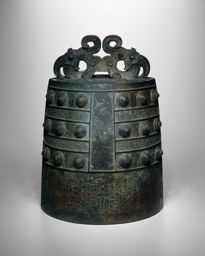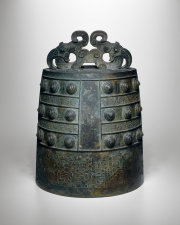Lesson Plan: Discovering Silk Road Stories
Discover the importance of storytelling along the Silk Road. Includes tips for a visit to the Field Museum.

Name: Gina Alicea
School: Talman Elementary School
Subject Area(s): Art, History
Grade Level: Fifth and Sixth Grade
State Goals
- 1B: Apply reading strategies to improve understanding.
- 2B: Read and interpret a variety of literary works.
- 5A: Research to acquire, organize, and use information to communicate ideas.
- 17C3a: Understand how human activity is affected by geographic factors.
- 18A4: Analyze influence of cultural factors.
- 4A3c: Follow multi-step oral instructions.
- 26B2d: Create works of art using problem solving and designing.
- 27B4: Understand how the arts change in response to changes in society.
- 1B: Apply reading strategies to improve understanding.
- 4A2b: Ask and respond to questions related to oral presentations.
- 5A: Research to acquire, organize, and use information to communicate ideas.
- 17C3a: Understand how human activity is affected by geographic factors.
- 18A4: Analyze influence of cultural factors.
Objectives
Students will:
- Develop a basic understanding of the importance of storytelling along the Silk Road.
- Read and interpret stories related to the Silk Road.
- Record important information from the stories.
- Understand how geographical factors influenced human activity along the Silk Road.
- Work effectively in small cooperative groups.
- Listen effectively to an oral presentation and ask questions.
- Research an exhibit case and record information.
- Make connections between the artifacts and the Silk Road.
- Listen effectively to multi-step oral instructions.
Materials/Resources
- Copies of the stories “The Bride with the Horse’s Head” and “A Rainbow in Silk”; Stories from the Silk Road, by Cherry Gilchrist
- Graphic Organizer 1
- Graphic Organizer 2
- Silkworm discovery box from Field Museum
- Map of the silk trade route
- Posters of Chinese Silk Painting and Silk Robes
- Bus and chaperones for field trip
- Field Museum floor map
- China permanent exhibit
- Field Museum docent
- Graphic organizer
- Students’ sketches from the Field Museum
- Map of the silk trade route
Procedures
Storytelling
- Ask the students what they know about storytelling.
- Provide a brief overview of the importance of storytelling in all cultures as a way to make sense of the world and spread information. (Remind them this was before newspapers, TV, internet, cell phones, etc.)
- Divide the class into two groups. Group A: Read the story “The Bride with the Horse’s Head;” Group B: Read the story “A Silk Rainbow."
- Groups A & B each complete the Graphic Organizer 1 in response to the story they have read.
- Groups report back to the whole class.
- Have the class discuss the findings of each group. Consider the following with the class: What are the similarities and what are the differences between the two stories? What have we learned?
Field Museum visit
- Plan a class visit to the Field Museum.
- In preparation for the visit, work with students on making up a list of things to look for at the museum that pertain to aspects of the Silk Road covered in the two stories.
- In the museum, divide students into two groups. Each will visit a different exhibition (China exhibition and Jade Hall exhibit).
- Have the two groups do the following:
Group One in China exhibition:- Students review museum etiquette.
- Review key elements of the Silk Road trade route.
- Students take a guided tour of China with a Field Museum docent.
- Discussion of the exhibit: question and answer with docent.
- Students choose an exhibit case (within the China exhibition) to analyze.
- Students answer questions on Graphic Organizer 2.
- Students will take a self-guided tour of the Jade Hall exhibit.
- Students will read the informational displays in the middle of the exhibit to gather information about jade and respond to questions in Graphic Organizer 2.
- Reflection. Both groups.
- Students will draw or sketch an object or detail of an object that caught their attention today because of its design, subject, or other interesting quality.

